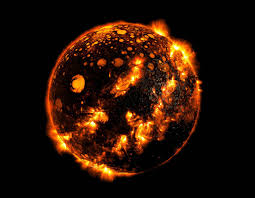Stellar Evolution: From Birth to Death and Everything In Between.
Stellar Evolution: From Birth to Death and Everything In Between
Stars are some of the most fascinating objects in the universe. They are the engines that drive the cosmos, powering everything from the formation of galaxies to the creation of life itself. But how do stars form, and what happens to them over the course of their lives? In this article, we will explore the process of stellar evolution, from the birth of a star to its eventual death, and everything in between.
The Birth of a Star
Stars are born in vast clouds of gas and dust known as molecular clouds. These clouds are extremely cold and dense, with temperatures hovering just above absolute zero and densities as high as a trillion particles per cubic meter. Within these clouds, tiny fluctuations in density can trigger the collapse of a small region of gas and dust, eventually leading to the formation of a new star.
As the gas and dust collapse under the force of gravity, the material at the center of the collapsing region becomes hotter and denser. Eventually, the temperature and pressure become high enough to initiate nuclear fusion, the process that powers a star. At this point, a new star is born.
The Main Sequence
For the majority of a star's life, it exists on the main sequence, a stable phase of nuclear fusion where hydrogen is fused into helium in the star's core. This process releases vast amounts of energy in the form of radiation, which pushes outward against the force of gravity that is trying to collapse the star. This balance between radiation pressure and gravity keeps the star stable and shining steadily for billions of years.
During the main sequence, the size and brightness of a star are determined by its mass. More massive stars are hotter and brighter, while less massive stars are cooler and dimmer. This relationship is known as the mass-luminosity relationship, and it is one of the fundamental properties of stars.
The Red Giant Phase
As a star begins to run out of hydrogen fuel in its core, it will start to expand and cool, entering what is known as the red giant phase. During this phase, the star's core contracts and heats up, causing the outer layers of the star to expand and cool, making it appear redder and much larger.
The red giant phase is a short-lived but important phase in a star's life, as it marks the transition from the stable main sequence phase to the more chaotic later stages of stellar evolution.
The Death of a Star
The exact fate of a star depends on its mass. Low-mass stars, like our Sun, will eventually exhaust all of their nuclear fuel and become white dwarfs. These stars will gradually cool over billions of years, eventually fading into darkness.
High-mass stars, on the other hand, will end their lives in much more dramatic fashion. When these stars run out of fuel, their cores collapse under their own weight, creating a massive explosion known as a supernova. The explosion is so powerful that it can briefly outshine an entire galaxy and create heavy elements like gold, silver, and platinum.
After the supernova, the core of the star may collapse even further, becoming a neutron star or a black hole, two of the most exotic and mysterious objects in the universe.
Conclusion
Stellar evolution is a complex and fascinating process that has shaped the universe as we know it. From the birth of a new star to the explosive death of a supernova, stars have played a key role in the formation of everything from planets to galaxies. Understanding the process of stellar evolution is not only important for our scientific understanding of the universe, but it also provides a glimpse into the cosmic history of our own existence.







0 Comments:
Post a Comment
Subscribe to Post Comments [Atom]
<< Home